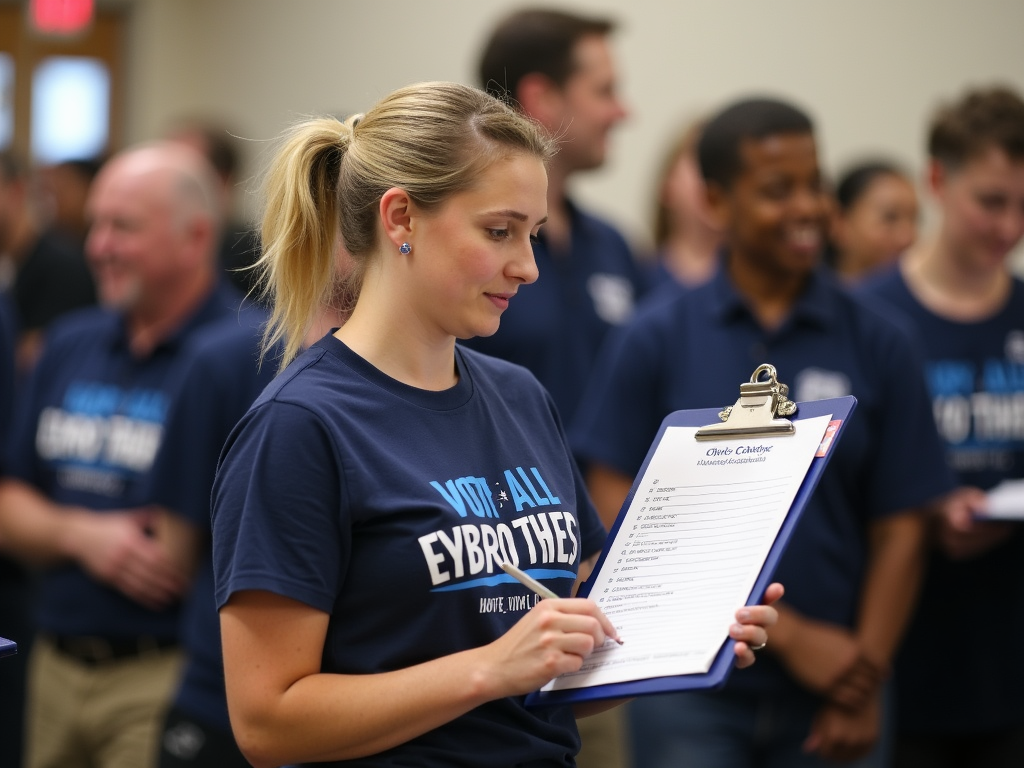Volunteer Engagement 2.0: A Game-Changer for Campaign Coordinators
By , April 19, 2025
Volunteer Engagement 2.0 by Robert J. Rosenthal offers a fresh take on managing volunteers in political campaigns. This book provides campaign coordinators with practical tools and strategies to inspire advocacy volunteering. It’s all about making volunteers feel valued and driving campaign success.
Why Volunteer Engagement Matters Today
Volunteers are the heart of political campaigns. Without them, reaching voters and spreading the message would be nearly impossible. Volunteer Engagement 2.0 by Robert J. Rosenthal shows how to connect with volunteers in a modern way. It moves beyond old-school tactics to build stronger, more motivated teams.

The book highlights how advocacy volunteering in political campaigns has evolved. Today’s volunteers want more than just tasks—they want purpose. Rosenthal’s approach helps coordinators tap into that desire, turning volunteers into passionate advocates for the cause.
Core Strategies for Volunteer Management
Rosenthal outlines several key ideas in Volunteer Management: Best Practices for Campaign Coordinators. Here’s a breakdown of the top strategies:
- Personal Connections: Reach out to volunteers by name. A personal email or a quick chat can make them feel seen.
- Smart Tools: Use apps and websites to organize tasks and schedules. This saves time and keeps everyone focused.
- Skill-Building: Offer training sessions to teach volunteers new skills, like knocking on doors or making calls.
- Say Thanks: Recognize hard work with small rewards or shout-outs. It keeps spirits high.
- Team Spirit: Bring volunteers together for events or online chats. A strong team sticks around longer.

These strategies aren’t just theory—they work. I’ve seen them in action. During a local campaign, we used personalized messages to assign roles. Volunteers loved it. They felt like part of the plan, not just extra hands.
Putting Advocacy Volunteering to Work
Advocacy volunteering in political campaigns means turning supporters into active voices. Volunteer Engagement 2.0 shows how to do this right. For example, training volunteers to talk to voters can make a huge difference. They become confident and effective messengers.
Technology plays a big role too. Campaign software can track who’s doing what and when. This keeps things running smoothly. In one campaign I worked on, we used an app to schedule door-knocking shifts. Volunteers could sign up on their phones, and we doubled our outreach in a week.

Recognition is another game-changer. Once, we started posting volunteer ‘wins’ on social media—like when someone signed up 20 new voters. The energy shifted. People worked harder because they knew their efforts mattered.
Real-Life Lessons in Volunteer Engagement
I’ve coordinated volunteers for years, and one thing stands out: appreciation goes a long way. Volunteer Engagement 2.0 by Robert J. Rosenthal backs this up. In a state election, we sent handwritten thank-you notes to every volunteer. The next week, turnout spiked. People wanted to come back.
Another time, we held a pizza night for our team. It wasn’t fancy—just food and conversation. But it built trust. Volunteers started sharing ideas, and soon we had a new phone-banking script that tripled our calls. That’s the power of community.

Training matters too. I once led a session on talking to undecided voters. We practiced simple phrases like, 'What matters to you this election?' Volunteers left feeling ready. The next day, they convinced dozens of people to vote. It was proof that preparation pays off.
How to Measure Success
How do you know your volunteer program is working? Look at the numbers—and the feelings. Are more people showing up? Are they excited to be there? Rosenthal suggests tracking things like hours volunteered and tasks completed. But don’t skip the human side—ask volunteers what they think.
Here’s a simple table to get started:
| Goal | How to Measure It | Why It Matters |
|---|---|---|
| More Volunteers | Count sign-ups weekly | Shows growth |
| Better Skills | Test after training | Ensures readiness |
| Happy Team | Quick survey after events | Keeps retention high |
This keeps your campaign on track.

Challenges and Solutions
Not everything goes perfectly. Sometimes volunteers drop off. Maybe they’re busy or feel unneeded. Volunteer Engagement 2.0 suggests checking in regularly. A quick call can bring them back. I’ve done this—once, a volunteer returned after I asked for her input on our next event.
Another issue is burnout. Campaigns are intense. To fix this, rotate tasks and give breaks. During a tight race, we gave our phone team a day off. They came back stronger, and we hit our call goal early.
Why This Book Stands Out
Volunteer Engagement 2.0 by Robert J. Rosenthal isn’t just a guide—it’s a mindset shift. It treats volunteers as partners, not workers. That’s what sets it apart. Whether you’re new to campaigns or a seasoned coordinator, this book offers ideas you can use right away.

Wrapping It Up
Volunteers fuel political campaigns, and Volunteer Engagement 2.0 by Robert J. Rosenthal shows how to keep them engaged. From personal connections to smart tools, its strategies build stronger teams. Try these ideas, and watch your campaign grow. For more insights, check out the recommended readings below.